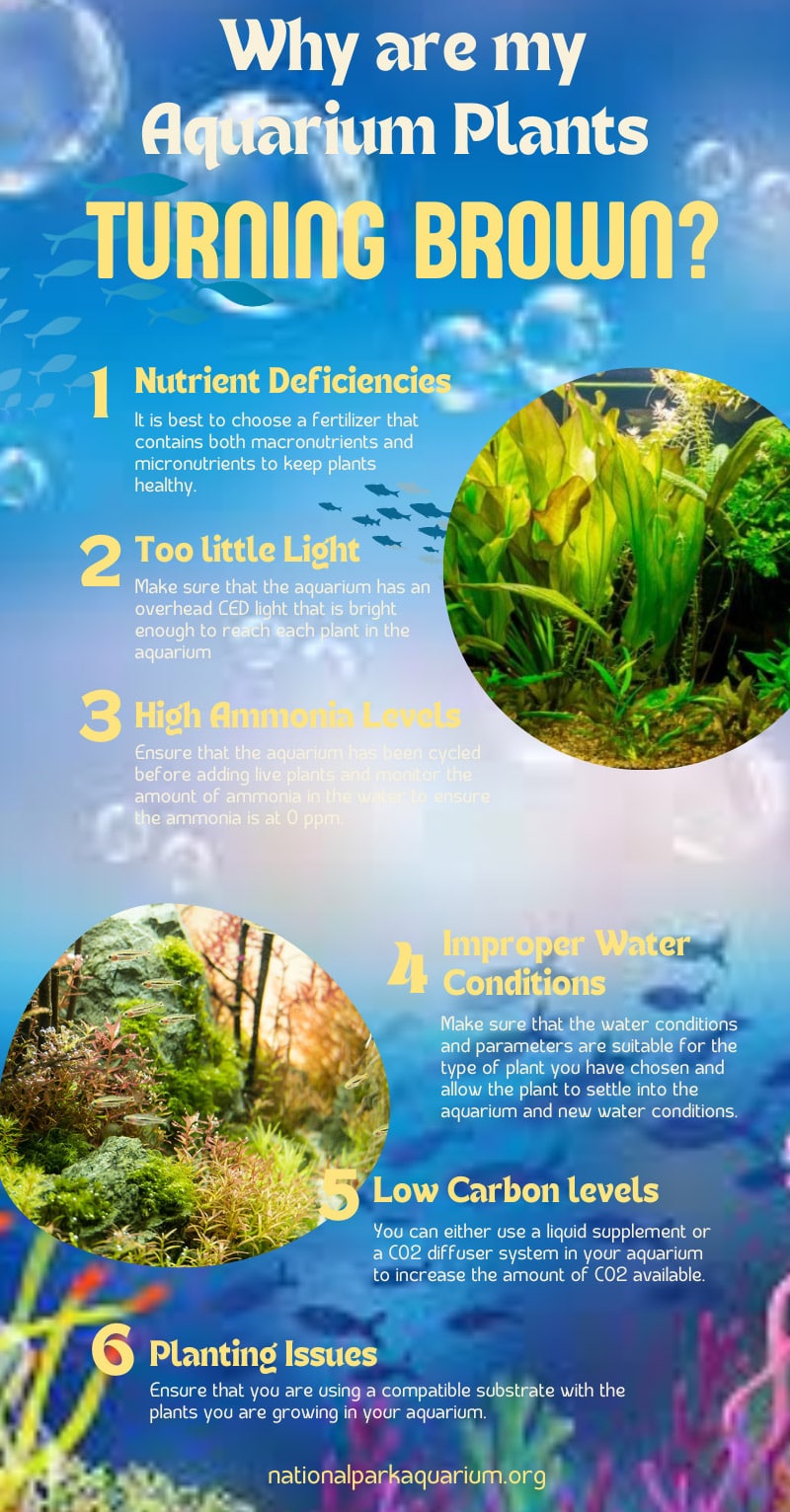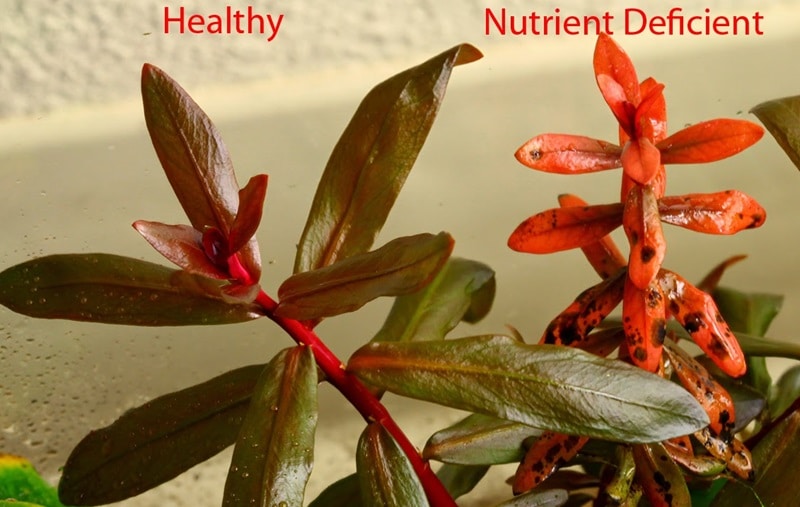Many aquarium plants tend to turn brown over time. This can be caused by several factors, such as nutrient deficiencies, inadequate lighting, or improper water conditions. If your plants are turning brown, you can do a few things to try and revive them.
In this blog post, National Park Aquarium will look at some of the most common causes of aquarium plants turning brown, and we’ll discuss some ways to fix the problem.
Common Reasons Aquarium Plants Turning Brown and Dark Yellow

1. Aquarium Plants Not Getting Enough Light
One of the most common reasons why aquarium plants turn brown is because they are not getting enough light.
Most plants need at least 8 hours of direct sunlight per day to stay healthy. If your plants are not getting enough light, they might become yellow then brown.
Plants need a certain amount of light to photosynthesize and stay healthy. Suppose your aquarium is not getting enough light. In that case, you will need to add more bulbs to your aquarium hood or move your aquarium to a brighter location.
Using a light meter, you can test the amount of light your plants are getting.
Once you know the light level, you can adjust it by adding more bulbs to your aquarium hood or by moving your aquarium to a brighter location.
2. Nutrient Deficiencies
Another common cause of brown aquarium plants is nutrient deficiencies. Plants need various nutrients to stay healthy, and if they’re not getting enough of one particular nutrient, they can quickly turn brown.
The most common nutrient deficiencies that cause browning plants are iron and magnesium.
You’ll need to add a nutrient-rich fertilizer to your aquarium to fix this problem. Many different types of fertilizers are available, so be sure to ask your local fish store for a recommendation.

3. Improper Water Conditions
Another common reason aquarium plants turn brown is improper water conditions.
Plants need specific pH, temperature, and hardness levels to stay healthy. If the water in your aquarium does not meet these requirements, your plants will start to turn brown.
You’ll need to test the water in your aquarium and make sure it meets the requirements for your particular plant species. You can find out what these requirements are by reading the care instructions with your plants.

4. High Phosphate Level
If the phosphate level in your aquarium is too high, it can cause your plants to wilt. Phosphates are found in many common aquarium products, such as fish food and plants. If you use these products in your aquarium, you may need to do a water change more often to keep the phosphate level low.
You can test the phosphate level in your aquarium with a simple test kit from your local fish store. Make sure to keep it below 0.02 ppm for a healthy environment.

5. Nitrogen Deficiency
Nitrogen is an important nutrient for all plants, and a deficiency can cause your plants to lose their green colors.
You can use live rock or add a deep layer of sand beds. These additions can add nitrogen gas, it is harmless and necessary to your aquarium.
Also, you can adjust it by doing a water change or by adding a nitrogen-rich fertilizer to your aquarium.

6. pH Level
The pH level of your aquarium water can also affect the health of your plants. Most plants prefer a pH level between 6.0 and 7.0. If the pH level of your aquarium is outside of this range, your plants may start to turn brown.
7. Algae in an Aquarium
Algae compete with plants for nutrients and can smother and kill plant life. To prevent algae from taking over your aquarium, remove any dead leaves or other organic matter from the tank and keep the tank clean.
You can also add algae-eating fish, such as plecos, to your aquarium to help control the algae population.

8. Temperature
The temperature of your aquarium water can also affect the health of your plants.
Most plants prefer a water temperature between 72 and 82 degrees Fahrenheit. If the temperature of your aquarium is outside of this range, your plants may start to turn brown.
You can test the temperature of your aquarium with a simple thermometer.

9. Too Many Fish in an Aquarium
When there are too many fish in an aquarium, the water quality can deteriorate, and the plants may not be able to get the nutrients they need.
If your aquarium is overcrowded, you’ll need to do a water change and remove some of the fish from the tank.
Tips to Keep Your Aquarium Plants From Turning Brown

1. Check the Water Quality
If the water in your aquarium is not clean, it can cause your plants to turn brown and die. Test the water quality and ensure it is within the normal range before adding new plants.
2. Inspect the Plants Carefully
Sometimes, brown leaves on aquarium plants are caused by pests or diseases. Inspect the plants carefully and remove any affected leaves.
3. Improve The Lighting
If the lighting in your aquarium is not good, it can cause your plants to turn brown. Increase the light or change the type of light to improve plant growth.
4. Fertilize Regularly
Aquarium plants need nutrients to stay healthy and grow well. Use a fertilizer designed for aquarium plants and follow the directions carefully.
5. Prune Dead Leaves
Dead leaves can fall into the water, and decaying matter can pollute the water and affect plant growth. Remove dead leaves from your aquarium regularly to keep the water clean and the plants healthy.
Conclusion
Aquarium plants turning brown can be frustrating and confusing. Thankfully, there are many possible causes for this problem, most of which are relatively easy to fix.
By troubleshooting the possible causes step by step, you should be able to identify the source of the issue and correct it in no time. Have you had any issues with your aquarium plants turning brown? What was the cause?




